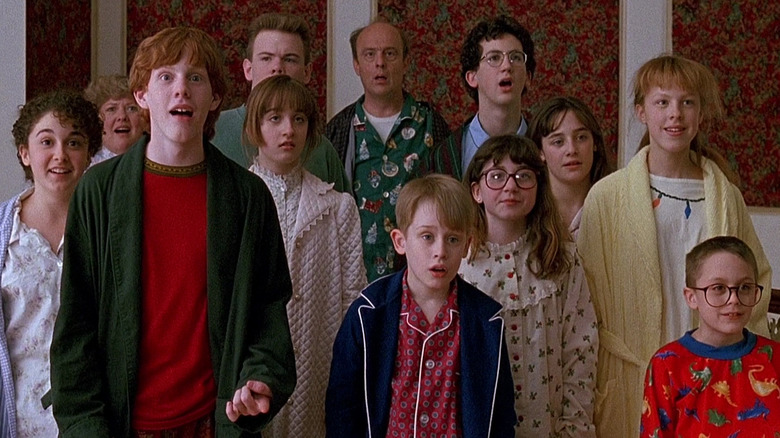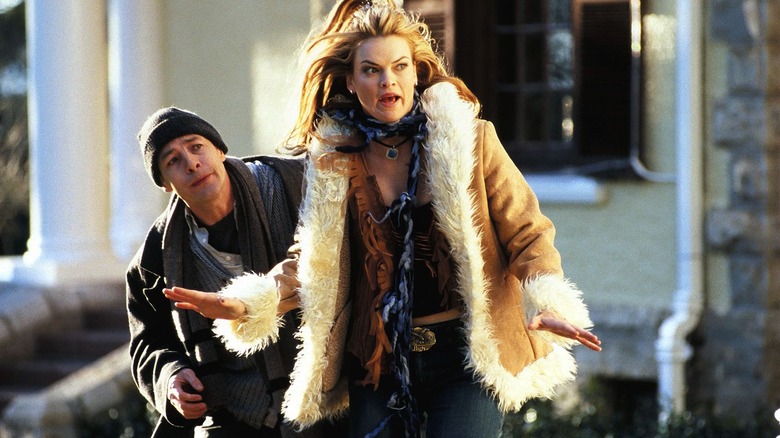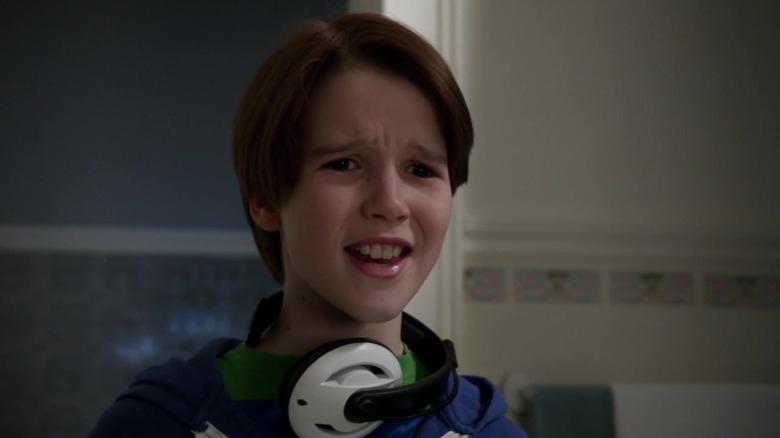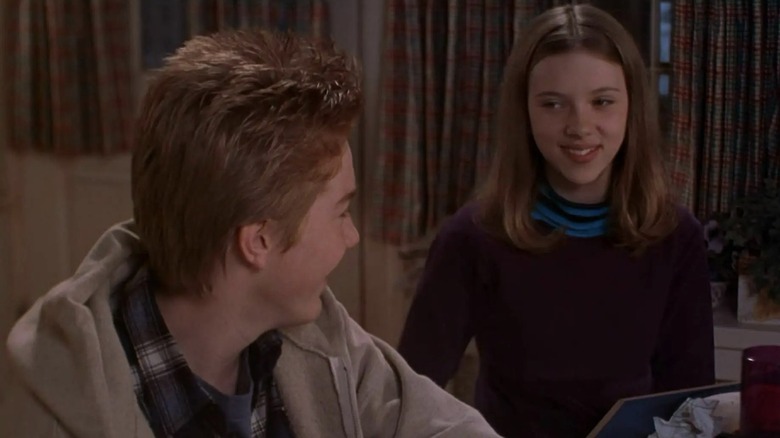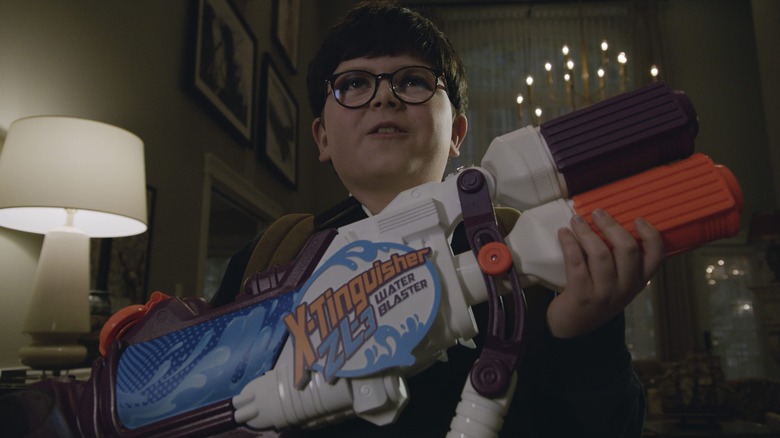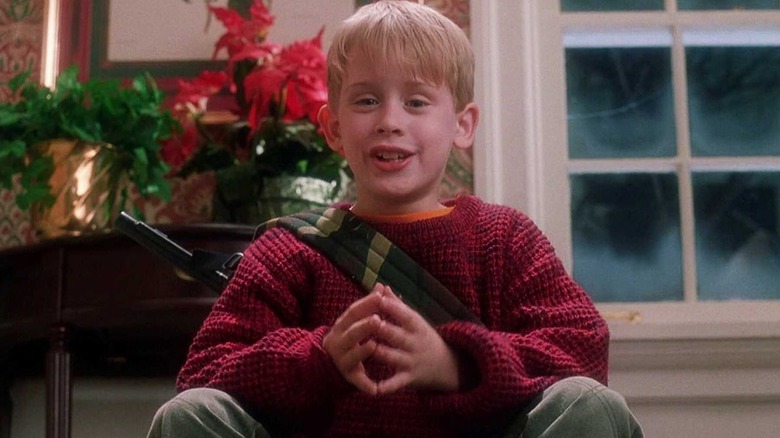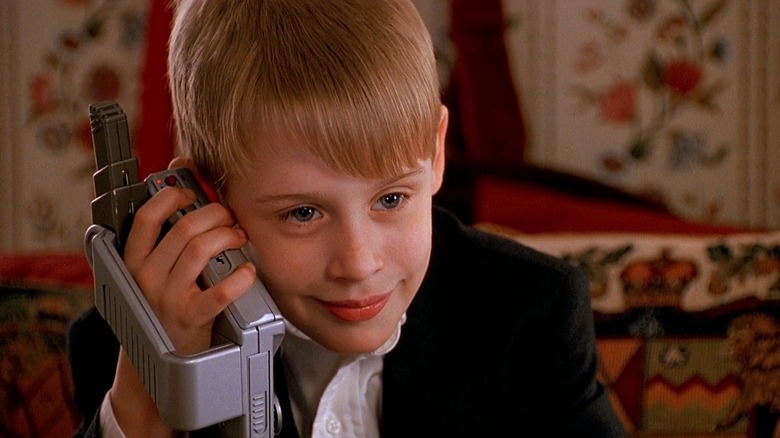Every Home Alone Movie (Including The Reboot), Ranked
Few franchises are as controversial as the feel-good Christmas family comedy "Home Alone." The first two films are widely beloved, bonafide staples of the American Christmas movie canon. However, the subsequent sequels — of which there are many — are almost universally despised. Most people haven't seen all of the "Home Alone" movies, and they might be left wondering — are any of the follow-up films worth watching?
Some feel that Macaulay Culkin leaving the franchise after the second film is what set the subsequent movies up for failure. In this critic's opinion, the "Home Alone" entries 3-6 suffer from a lot more than bad casting. However, I watched every "Home Alone" movie so you didn't have to, and I am here to answer some age-old questions. Firstly, is "Home Alone 2" better than the original? And secondly, are any of the follow-up films worth watching? My answer might surprise you.
You might disagree, but when it comes to comedy, heart, and Christmas spirit, this is how I thought every "Home Alone" movie stacked up.
6. Home Alone 4: Taking Back the House (2002)
"Taking Back the House" returns to Kevin McCallister, his family, and his nemesis Marv as a true sequel in the "Home Alone" series after a brief departure from the McCallisters in the third movie. Everyone in the film has been recast, and between the recast old characters and drab new characters, the new Kevin (Mike Weinberg) manages to be even a fraction as compelling as his original counterpart. The worst one of the bunch is the new Marv (French Stewart), whose Jim Carrey impression falls flat every time he's onscreen.
The farcical plot is interesting on the surface, incorporating the high-stakes crime of the third film with the bumbling naivete of the first two. However, Kevin is trapped in a wine cellar just before the climax takes the wind out of the sails. He barely does any booby-trapping, and what's worse, it's not he who saves the day in the end, but the butler.
But the biggest black mark on this film is the storyline with Kevin's parents. His father (Jason Beghe) leaves his mother (Clare Carey) for a wealthy femme fatale (Joanna Going) and even gets engaged to her, but in the end, his ex-wife forgives him because he realizes his affair was driven by "infatuation," not love. Of course, these things happen, but it was handled so coldly and without any ethical concern that I am left questioning the screenwriter's idea of a happy marriage.
5. Home Alone: The Holiday Heist (2012)
This fifth entry into the "Home Alone" franchise suffers in a lot of ways. For one thing, the budget is clearly a lot lower than the previous films, with the first scene shot against obviously green-screened car windows. But the low budget could have been compensated with charisma. Sadly, all of the acting in the main family is terrible. Their comedic timing couldn't be worse, and the pacing of every scene feels uncanny and slow. What's worse, the main character Finn (Christian Martyn) is just a bit too old to be disarmingly cute. And on top of the forgettable performances comes the incredibly banal storyline. The kids' refusal to do anything other than play with their screens is exhaustingly repetitive, albeit ominously prescient. However, this movie does have one huge saving grace — Malcolm McDowell.
The decision to cast McDowell as the villain made at least a few moments of this movie genuinely watchable, and that's more than what can be said for most of the "Home Alone" sequels. His character's accomplices, played by Eddie Steeples from "My Name is Earl" and Debi Mazar of "Younger," also maintain a well-paced and clever rapport and deliver some excellent physical comedy. They are the saving grace of the movie.
Another pro for the forgotten "Home Alone" is a return to basic booby traps. The high-tech gear in the third and fourth movies is less fun to watch. Unfortunately, the pacing of "Holiday Heist" is so slow that it is still worse than most of the other films.
4. Home Alone 3 (1997)
The third "Home Alone" was always at a disadvantage because it's the first film where Macaulay Caulkin was replaced as the central character, this time by Alex D. Linz. The young actor's performance is solid, even charming, but he was left with impossibly big shoes to fill — so impossible that he was made into a totally separate character named Alex. It's safe to say that the audience would not have been satisfied with anyone but Culkin. Regardless, Linz might have earned more praise for his performance if he had been given better material to work with.
The slapstick comedy and quippy dialogue that defined the first two films are undermined in the third by crass and persistent toilet humor. It feels like this movie was not just made for little boys but by them as well.
The premise of the third "Home Alone" is even more exciting than the others on paper, involving high-tech espionage and a case of mistaken identity. However, the structure — with the parents constantly returning — dilutes the tension and excitement of the original premise.
In "Home Alone" and "Home Alone 2," Kevin's mother's quest to return to her son after a moment of neglect is the beating heart of the film. In "Home Alone 3," Alex's parents show no consideration for him whatsoever. The premise of the first two movies presents questions about the McCallisters like "When will they be reunited?" and "Will Kevin forgive his mother for abandoning him?", while the third simply asks "When will Alex's parents believe him?" The answer is, predictably, at the very end.
Despite its many flaws, the reason it scores so high on the list is Linz's charisma, the cartoonish charm, and the comedic timing — something the subsequent films mostly lack.
3. Home Sweet Home Alone (2021)
I'm not saying that it lives up to the originals — that's why it's number three — but it's the closest by a mile. "Home Sweet Home Alone" is a high budget return to form. The original premise is recreated when Max Mercer, played by the adorable Archie Yates, is left at home and his mother, portrayed by the pitch-perfect Aisling Bea, has to find a way home from Tokyo through a holiday snowstorm. The movie is punctuated by references to the original two films, from the McCallister security system to a cameo from Devin Ratray, who reprises his role as Kevin's tyrannical older brother, Buzz McCallister. Buzz being a cop makes perfect sense for the character and provides the prefect way to write out law enforcement's involvement early on.
"Home Sweet Home Alone" follows two families — one that is financially succeeding but struggling to hold itself together, and another that has strong bonds but is on the verge of losing their house. The movie itself is high budget, but it manages to demonstrate the growing wealth disparity in the middle class and how normalized financial struggles have become between the early '90s and early '20s. The bizarre MacGuffin of a defective doll adds some levity to an otherwise very serious plot.
There are lots of solid comedic performances in this one, from Bea to Pete Holmes to Ellie Kemper to Kenan Thompson. No one is necessarily at their best, but they all bring their own unique charm. Kemper and her partner-in-crime Rob Delaney definitely deliver in the slapstick comedy department, but the sequences aren't shot quite as fluidly as the originals. The cinematography isn't the only problem with the physical comedy, though — since the villains are more sympathetic, they are less cartoonishly hilarious to laugh at than the Wet Bandits — the audience can't help but feel a bit bad for them.
2. Home Alone (1990)
What can I say that hasn't been said? It's a time-honored classic, and it simply wouldn't feel like Christmas without it. Every character is a downright ball of fun, from Macaulay Culkin's Kevin to John Candy's unlikely polka-playing hero — well, okay, Kevin's family isn't exactly fun. His mother (Catherine O'Hara) is neurotic, his father (John Heard) is a space cadet, and the rest of his family is downright mean. But his mother's love for him drives the film, and even his nastiest family members have a compelling curmudgeonly energy.
The most memorable parts of this movie, as they should be, are Kevin's clever antics and the villains' physical comedy. The mannequins dancing to "Rockin' Around The Christmas Tree," the icy steps, the hot doorknob, the monologue from the gangster movie — these iconic moments were never created organically again, even in the second movie. "Lost in New York" is an advertisement for the city, but the first "Home Alone" is a true original — the story of a clever boy armed only with childhood curiosity and household objects taking on a pair of bufoonish thieves and winning.
1. Home Alone 2: Lost in New York (1992)
Although the plot is more convoluted than the original, and perhaps the booby traps are less elegant, this movie's love letter to the big apple imbues it with an extra dose of holiday spirit. All the New York staples are featured, from pizza to The Plaza to a certain ex-president. The movie employs old villains perfectly and even brings in a lively new adversary played by the incomparable Tim Curry.
Staying at an expensive hotel like the Plaza turns Kevin back into the indulgent rascal he appears as in the original film. Setting him loose in the concrete jungle with Daddy's credit card was the perfect way to reinvent his arc and reset his moral compass. If we just saw him as a helpless hero down on his luck, it would be all too tragic. His being a bit of a spoiled brat reminds the audience of his devious side. But not to worry — that impishness that gets him into trouble is the very thing that gets him out of it again.
Kevin also finds a new friend in the pigeon lady (Brenda Fricker), who recreates his relationship with the creepy old man next door from the first movie. "Lost in New York" manages to maintain all the things that made the original film successful without being too repetitive. It's the perfect Hallmark picture of New York around the holidays, and any sucker for the city can't help but love it the best.
